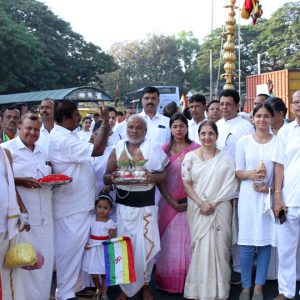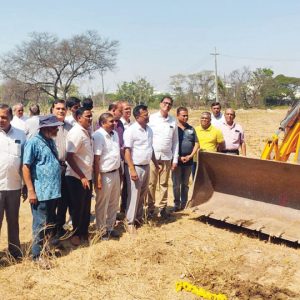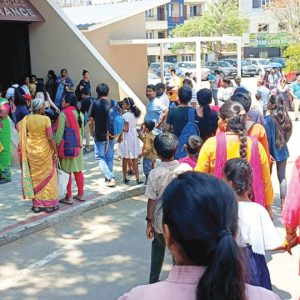India is a country located on the Peninsula of Hindustan and inhabited by numerous peoples, nationalities and tribes that belong to different ethnic groups, speak different languages and stand at different levels of cultural and social development.
The main languages of India, spoken by an overwhelming majority (87.13%) of the population, are Assami, Bengali, Gujarati, Kannara, Kashmiri, Malayalam, Marathi, Orya, Punjabi, Sanskrit, Sindhi, Tamili, Telugu, Urdu and Hindi. Hindi is declared the official language of the country.
One of the main cultural and linguistic regions of India is Hindi language area, i.e. those areas of Northern India, where Hindi is adopted as the official language (states of Uttar Pradesh, Madhya Pradesh, Haryana, Bihar, Rajasthan, Himachal Pradesh and the capital district of Delhi). Hindi is spoken by over 290 million people.
Religious-community problem has a significant influence on the anthroponymy of India: as a rule, the decisive factor in naming is belonging to a particular religion. The population of India professes different religions. The main religions of India are Hinduism and Islam: their followers make up about 95% of the population. At the same time, there are quite numerous representatives of other religions in India: Christianity, Sikhism, Buddhism, Jainism and some others (fire-lovers, Jews, etc.).
The Hindus adhere strictly to the traditional Hindu system of naming.
As is known, the caste hierarchy of society is inextricably linked with Hinduism. Although all progressive, democratic forces of modern India are against the caste, the institution of caste shows amazing vitality and tenacity: the caste continues to live in the consciousness and social psychology of Hindus, defining their family way, customs, tastes, habits, preferences, moral attitudes and value criteria. Naturally, the caste also has a decisive influence on the anthroponymy of the part of the population that professes Hinduism and makes up more than 4/5 of the country’s population.
The anthroponymic model of Hindu Indians is two-member, i.e. The Indian name in its full form usually consists of two elements: an individual name and a collective name, for example: Banarasidas Chaturvedi, Vrindanvinlal Varma, Dhanpatrai Shrivastav, Krishnadev Upandhya, Krishnandra Chopra, Ramvilas Sharma, Ramchandra Shukla, Shivprasad Singh (Singh), etc.
As for the first component of Sanskrit baby names, its morphological and etymological transparency should be emphasized. Indian, as a rule, is a complex word, usually consisting of two (less often – three or more) components, built to corresponding lexical units, usually of Sanskrit origin. There are different types of non-affixed syntactic relationships between the components of the name. The syntactically leading component is the second (or the one that completes the whole composite); the first component is associated with the second attributive or appositive connection, i.e. acts as a definition or application to the second.
As the first component, especially the higher castes usually use the name of one of the most important gods of the Indian pantheon or mythological hero canonized by Hinduism (Rama, Krishna, Shiva), traditionally accepted for a deity epithet or descriptive name of a god or mythological hero . It should be emphasized that the use of a deity’s name is not arbitrary. This is due to the fact which deity – Rama, Krishna, or Shiva – is worshipped in a given area and, consequently, which of the deities is most revered in the family of the newborn.
As the first component, even for men, the names of goddesses are used – the spouse of the gods listed: Davi (or Mahadewi),
The Feminine Name is formed accordingly by the second component – the Feminine Name: -Davi, -Kumari, etc.
Consequently, the lexical content of the second component can also serve to a certain extent as a “regional marker” of its carrier.
The second component is usually Sanskrit lexemes, but this function often uses Arabic-Persian words included in the Indian languages with the advent of Muslim culture: Ramdas and Ramgulam ‘slave, servant of Rama’, Ramvilas and Ramikbal ‘joy of Rama’. This once again confirms that the Arabic-Persian vocabulary is firmly embedded in the Indian languages and has long since been recognized as something foreign.








Recent Comments